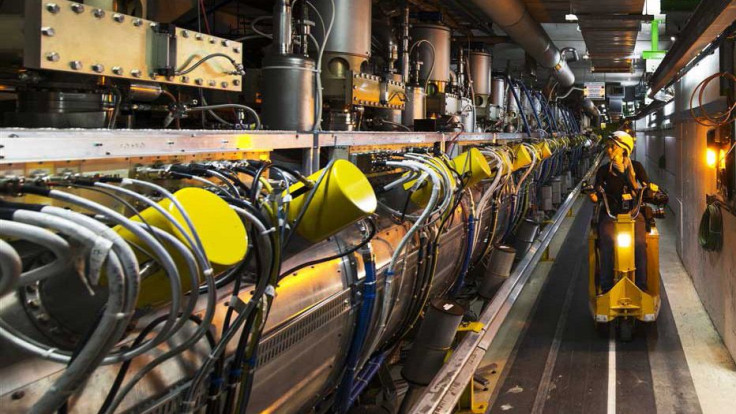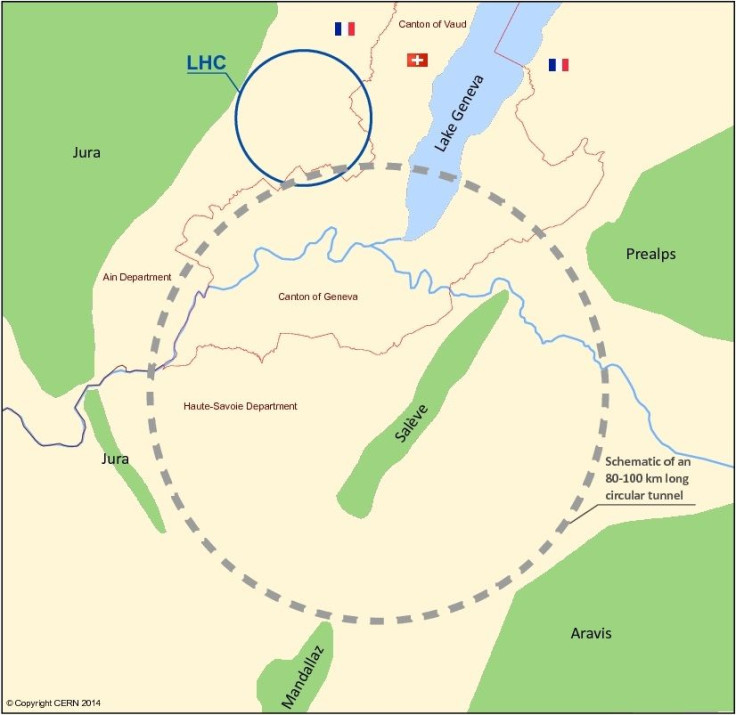Future Circular Collider, Particle Accelerator To Succeed LHC, Will Be Three Times As Big

Over 500 scientists and researcher are meeting in Berlin from May 29 to June 2 to discuss the plans for the Future Circular Collider, a massive particle accelerator than is expected to succeed the Large Hadron Collider. In the meeting, the attendees are reviewing progress on the concepts for the FCC, which will be three times as big as and seven times more powerful than the LHC.
Compared to the LHC’s 27-kilometer (17 miles) long looping tunnel, the FCC will be a 80-100-kilometer circular collider sitting just south of the world’s current largest particle accelerator, straddling the Swiss-French border. Compared to the 13 TeV of energy reached by the LHC in its 2015 run — which is the current world record, though it could be bettered during the ongoing 2017 run — the FCC could smash particles with power of up to 100 TeV. That amount of energy is roughly equivalent to 10 million lightning strikes.
LHC’s current run lasts through 2018, and the accelerator will need to be upgraded in the mid-2020s to boost its rate of particle collisions. But another collider with higher energy capabilities is needed to go beyond what the LHC is capable of. The confirmation of the existence of the Higgs boson, made by the LHC in 2012, opened up many new questions for scientists, at least some of which they hope the FCC will help them answer.

Read: LHC Starts Its 2017 Run In Earnest, First Data Starts Being Taken
“When you look into things like the movement of galaxies, we see that we can only understand and explain about 5 percent of what we observe. But with questions like the so-called problem of dark matter, which is linked to the fact that galaxies and stars are not moving as you would expect them to, the only explanation we have is that there must be matter we do not see which distorts the movement accordingly,” Michael Benedikt, leader of the FCC, told Horizons, a science publication by the EU, explaining the benefits the energy jump might provide.
Benedikt is also the project coordinator of EuroCirCol, a European-funded four-year study to determine the experiments and technology needed for the FCC. The study has representatives from 110 institutes, spread across 32 countries. A “Conceptual Design Report” — it will “document the accelerator, infrastructures and experiments, as well as a plethora of physics studies proving FCC’s ability to match the long-term needs of global high-energy-physics programs” — was originally scheduled to be delivered by 2019, but the Horizon report suggests, citing Benedikt, it could be moved up to 2018.
Testing of some possible FCC components and prototypes is already ongoing, such as an advanced cryogenic beam vacuum system required for the collider being tested in Germany. Benedikt was confident that the final design “will lead to the performance we want and need.” However, it will likely take over 20 years before the FCC is actually operational.
For a perspective of time taken for such designs, the LHC took almost 30 years to get up and running, from the time initial planning for it began.
© Copyright IBTimes 2024. All rights reserved.





















